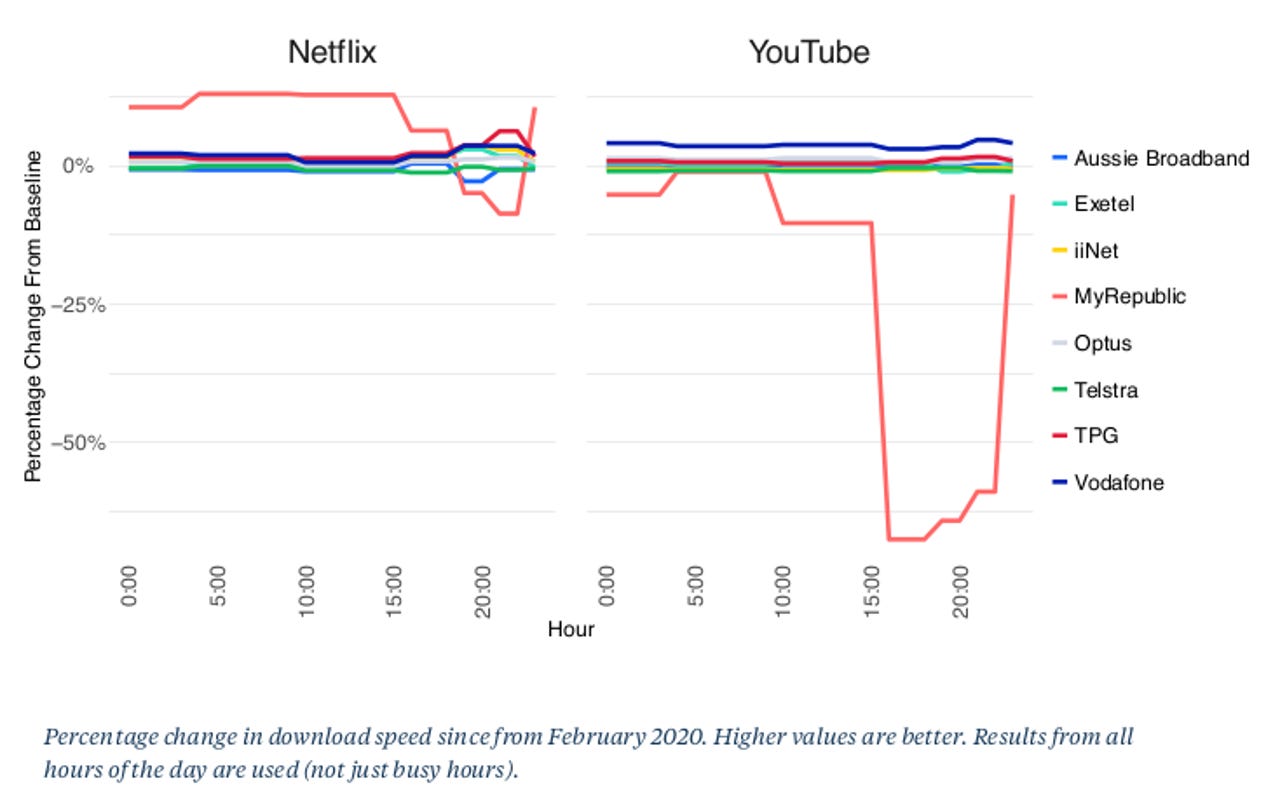Physical location of video conferencing servers key to Australian performance: ACCC


The relationship between a user's physical location and that of the servers used for their video conferencing service of choice is, unsurprisingly, the key to low latency and a better experience, the Australian Competition and Consumer Commission (ACCC) said.
Using data collected during May, the SamKnows boxes used for NBN speed monitoring undertook a series of tests related to video conferencing and video streaming.
"Google Meet, Skype, and Teams exhibit significantly lower latency than the other services measured as these services use servers located in Australia," the ACCC said in its Critical Services Report.
"Zoom, Webex, and GoToMeeting use servers based in the United States, the Netherlands, and Singapore, respectively."
After publication, Zoom contested the ACCC's findings by stating that it had data centres in Sydney and Melbourne. However, the service's latency is well above its competitors -- sitting above 200ms against well under 50ms for other services that use Australian servers.
Similarly Cisco, which the ACCC said had latency of 300ms for its Webex product, disputed the claim it used data centres in the Netherlands.
"When connecting to Cisco Webex Sydney data centre, latency is significantly less than what is claimed in the report," Cisco said.
"Cisco was not consulted by the ACCC prior to publishing this report."
The ACCC report had used over 850 samples for Zoom and Webex in its report.
Of the video conferencing applications using servers within Australia, the ACCC said Western Australia had the highest latency for Google Meet and Teams, suggesting the use of servers on the east coast, while Skype had less of an issue due to it using alternate servers.
While the ACCC said the choice of speeds between 50Mbps and 100Mbps did not make a difference, for tests conducted with Webex and broken down by ISP, there was a difference.
Aussie Broadband had the lowest latency, typically 50ms quicker than its major rivals, followed by Exetel and TPG. The other tested retailers -- MyRepublic, iiNet, Telstra, Vodafone, and Optus -- were all clumped in a group around the 325ms mark.
The ACCC also said while fibre-to-the-premises and fibre-to-the-curb technologies provided lower latency than fibre-to-the-node and HFC connections, the difference was unlikely to be noticeable to users.
"The impact of access technology on those services with international servers is extremely small compared to overall latency," it said.
For the video streaming services tests, the ACCC similarly said the differences between NBN access technologies was not noticeable, and any differences in its numbers were most likely caused by the sample.
The ACCC though, did take MyRepublic's network design to task -- to such an extent that it ended up excluding it from its analysis.
"Through investigation, we have found that all YouTube traffic for MyRepublic is served from Google's central (off-net) YouTube servers in one city -- Sydney. This differs from other RSPs, who host YouTube servers within their own network and in multiple locations too," it said.
"This issue seems to cover all services with MyRepublic always routing through Sydney irrespective of location within Australia, thus also covering Netflix."
MyRepublic was also dead last in webpage loading time tests conducted as part of the ACCC's first monthly Measuring Broadband Australia report.
In general terms, the report released on Wednesday said the performance improvement of Netflix, compared with a February baseline, was higher than YouTube, and was likely due to changes the streaming service made at the start of the coronavirus pandemic.
The ACCC also pointed to a performance drop on May 19, which was when the NBN reported record peak download traffic of 14.5Tbps, thanks to a Call of Duty update.
Updated at 1:01pm AEST, 8 July 2020: Added Zoom comment.
Updated at 9:20am AEST, 9 July 2020: Added Cisco comment.
Related Coverage
- NBN launches satellite backup for business customers
- Department of Finance dismisses idea of discretionary NBN write-down
- Fixed wireless tower opposition and rocks saw 500 premises bumped onto NBN satellite
- NBN moves coronavirus CVC boost cut off date to August 19
- NBN admits telling Canberrans they needed to move off TransACT when they didn't